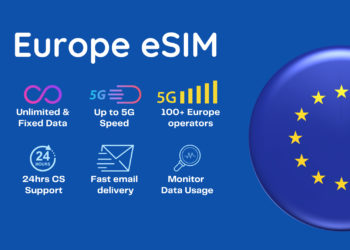Road safety is an important issue for companies managing vehicle fleets and individual drivers alike. Traffic accidents cause huge financial costs, insurance claims, and most tragically, human harm or loss of life every year. Although conventional safety policies and training offer a starting point, contemporary technology opens up unparalleled possibilities to reinforce driver safety with real-time observation and data-based information.
Vehicle telematics technology has also been hailed as an effective tool to enhance road safety through the much-needed visibility into vehicle performance, driving habits, and road conditions. The high-tech system integrates GPS monitoring, in-vehicle diagnostics, and wireless communication to yield holistic safety surveillance solutions for drivers, fleet managers, and society at large.
Knowledge of how telematics technology promotes driver safety is what assists organizations with making rational choices regarding installing such systems while revealing their dedication to public welfare and workers’ well-being. The next five methods present the best methods through which this technology operates to help prevent risky driving habits and lower accident rates.
1. Real-Time Monitoring of Hazardous Driving Habits
Current telematics systems constantly monitor dangerous driving habits that lead to accidents, instantaneously giving feedback and long-term analysis for accident prevention. They monitor a variety of risk factors at the same time, building an overall picture of driving competence that was unattainable before.
Excessive speed is among the leading risk factors tracked by telematics systems. The technology monitors vehicle speed against road signs and company regulations, providing warnings when drivers drive beyond safe speeds. Real-time tracking allows for quick intervention via in-cab notifications or dispatcher warnings, averting hazardous situations before they become more serious.
DQs such as hard acceleration, hard braking, and hard cornering reflect higher accident risk. Telematics systems identify these DQs through accelerometer and GPS information, offering objective measures of driving smoothness. This data identifies motorists who require further training or coaching to adopt safer driving practices.
Following distance measurement employs radar or camera technology to detect the distance between vehicles and notify drivers when they are driving too closely. Having sufficient following distance offers essential reaction time during emergency maneuvers, greatly lowering rear-end collision hazards.
Distracted driving detection has evolved to detect phone use, periods of prolonged periods without steering input, or other signs of driver distraction. Some more advanced systems can identify drivers using mobile devices or participating in other distracting behaviors behind the wheel.
2. Fatigue and Drowsiness Detection Systems
Driver fatigue contributes to numerous accidents, particularly in commercial transportation where drivers spend extended hours on the road. Telematics systems now incorporate sophisticated fatigue detection capabilities that monitor driver alertness and recommend rest breaks when necessary.
Hours of service tracking guarantees drivers meet regulatory standards for rest periods and driving time limits. The system automatically monitors driving hours and warns drivers and dispatchers when required rest breaks are near, avoiding violations that impair safety.
Pattern analysis of driving detects small driving behavior deviations that can be an early warning of fatigue, for example, lane weaving, accelerations and decelerations that are not consistent, or slow reaction to traffic conditions. These signs enable early intervention before the onset of dangerous fatigue.
Biometric monitoring using wearable sensors or in-seat sensors can measure heart rate, body heat, and other physiological measures of fatigue. As yet developing, such technologies offer direct measurements of driver alertness levels.
Route planning optimization considers driver schedules and rest requirements when planning trips, ensuring adequate time for breaks and preventing situations where drivers feel pressured to exceed safe driving hours.
3. Maintenance Alerts and Vehicle Health Monitoring
Vehicle mechanical problems can create dangerous situations that endanger drivers and other road users. Telematics systems monitor vehicle health continuously, providing early warning of potential mechanical issues before they become safety hazards.
Engine diagnostics monitoring monitors key engine parameters such as temperature, oil pressure, and emission system operation. Early identification of engine issues avoids breakdowns that might leave drivers stranded in isolated areas or result in sudden failure of vehicles.
Brake system monitoring identifies wear patterns and performance deterioration that may undermine stopping power. By taking a proactive approach, brakes are addressed before they fail, avoiding accidents due to brake system failure.
Tire pressure and condition monitoring notifies drivers of underinflated tires or worn-out tread patterns that raise blowout possibilities. Regular tire maintenance enhances driving stability and minimizes the risk of tire-related crashes.
Scheduled maintenance reminders help vehicles get appropriate service according to miles, engine hours, or calendar cycles. Vehicles with maintained checklists perform more reliably and safely than vehicles with postponed maintenance problems.
4. Emergency Response and Incident Management
During accidents, telematics systems can help tremendously in faster and better emergency response and coordination, hopefully alleviating injury severity and even saving lives. Telematics systems facilitate such important information and communication features in emergency scenarios.
Automatic crash notification employs accelerometer and impact sensors to determine when crashes have happened, even when drivers cannot call emergency services. It is possible for the system to call emergency services automatically and give accurate location data, cutting response times in emergency situations.
GPS location tracking facilitates rapid and accurate location of accident sites by emergency responders, especially valuable in isolated or unfamiliar areas where the driver may not be able to give precise directions.
Medical information storage enables telematics systems to keep driver medical profiles such as allergies, medications, and emergency contacts. The data can be communicated to emergency responders for enhanced quality of medical care in emergency situations.
Two-way communication functions allow dispatchers to stay in touch with drivers during emergencies, reassuring them and coordinating response. This line of communication is particularly useful when drivers are traumatized or disoriented after accidents.
5. Data-Driven Safety Training and Improvement Programs
The most significant long-term advantage of telematics technology may be its capacity to develop actionable safety data that encourages driving performance improvement on an ongoing basis. Data-driven versus generic safety training, this format targets specific behaviors and hazards.
Individual driver scorecards deliver objective performance measures that enable drivers to comprehend their safety performance against company norms and peer groups. Such scorecards often provide metrics on speeding, severe braking, acceleration behaviors, and other safety behaviors.
Focused training programs utilize telematics information to pinpoint particular areas in which individual drivers must improve. Rather than general safety training, drivers are coached on their individual risk behaviors, and training is better targeted and appropriate.
Risk assessment and profiling enable fleet managers to recognize high-risk drivers who can benefit from added support, training, or surveillance. Proactive steps are taken to prevent accidents as risky habits are addressed before they lead to accidents.
Benchmarking and goal setting allow organizations to set safety performance objectives and monitor improvement over time. Continuous review of safety measures keeps the focus on ongoing improvement and rewards accomplishment in meeting safety objectives.
Incentive for performance can provide rewards for drivers who habitually practice safe driving habits, providing positive reinforcement for beneficial practices. These systems typically involve recognition, desirable assignments, or monetary rewards for high-safety performers.
Implementation Planning for Optimal Safety Benefits
Successful vehicle telematics implementation to enhance safety comes down to meticulous planning and management of technical and human factors. Companies have to weigh monitoring opportunities against driver privacy issues while guaranteeing that the technology adds to rather than takes away from the driving experience.
Driver acceptance is a key success factor in telematics safety initiatives. Open communication regarding system goals, data use, and privacy safeguards builds trust and collaboration. Focusing on safety gains over punishment-based monitoring techniques tends to create higher driver acceptance.
Training and support help drivers know how to effectively utilize telematics feedback to improve safety. Providing explicit explanations of safety measures and how to recognize alerts enables drivers to be personally responsible for their safety performance.
Privacy and security concerns regarding data must relieve driver anxiety regarding surveillance and data use. Explicit policies regarding data collection, storage, and use facilitate trust in the system while maintaining regulatory compliance with privacy rules.
Integration with current safety programs brings synergy between telematics technology and conventional safety measures. Merging data-driven information with safety meetings, training initiatives, and policy compliance establishes holistic safety cultures.
The Future of Telematics and Driver Safety
Automobile telematics technology keeps advancing with added functions that provide even more safety advantages. Knowledge of upcoming trends prepares organizations for opportunities for future safety improvement.
Machine learning and artificial intelligence algorithms more and more scrutinize telematics data for nuanced patterns and safety risk predictions prior to their realization as accidents. Such predictive functionality allows for early interventions to prevent incidents instead of reacting after the fact.
Vehicle connectivity technology makes it possible for vehicles and infrastructure to communicate with each other, offering improved situational awareness and collision avoidance features. Such vehicle-to-everything communication holds the potential for improved safety as the technology gains increased use.
Incorporating advanced driver assistance systems with telematics provides holistic safety monitoring that integrates human behavior analysis with safety interventions from automation. This synergy allows for several layers of safeguarding against accidents.
Monitoring Safety Improvement Success
The use of telematics for safety improvement is dependent on continuous measurement and assessment to validate the technology’s ability to achieve desired benefits. Organizations need to establish baseline safety performance prior to implementation and monitor progress over time.
Accident reduction rates are the most explicit indicator of the success of safety improvement. Companies generally monitor both frequency and severity of accidents to capture the full effect of telematics implementation on safety performance.
Decreases in insurance costs usually follow enhanced safety performance, offering quantifiable financial gains that can justify telematics investments. A large number of insurance carriers offer incentives for fleets with telematics-based safety monitoring systems.
Improvement in driver behavior can be quantified by telematics data itself, which demonstrates decreases in speeding, hard braking events, and other unsafe behaviors. These leading indicators of accident reduction are frequently expected to precede it being seen in incident statistics.
Through vehicle telematics, businesses can monitor behaviors such as speeding and hard braking to reinforce safer driving and build a safer culture that protects drivers and the public they serve.
The application of telematics technology into safety programs is a major step in the protection of drivers and minimizing accident risks. Through the use of real-time tracking, predictive analytics, and data-based training programs, organizations can make their driving environments safer for all road users. As the technology progresses, its use in ensuring driver safety will only grow more significant and impactful.












































































